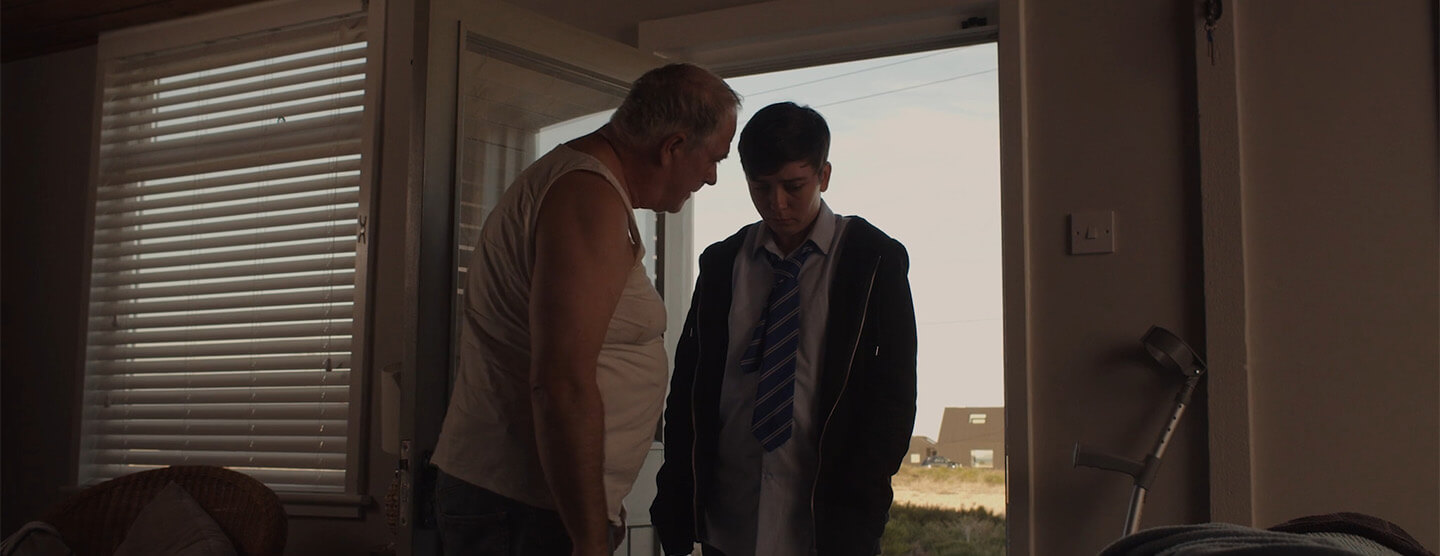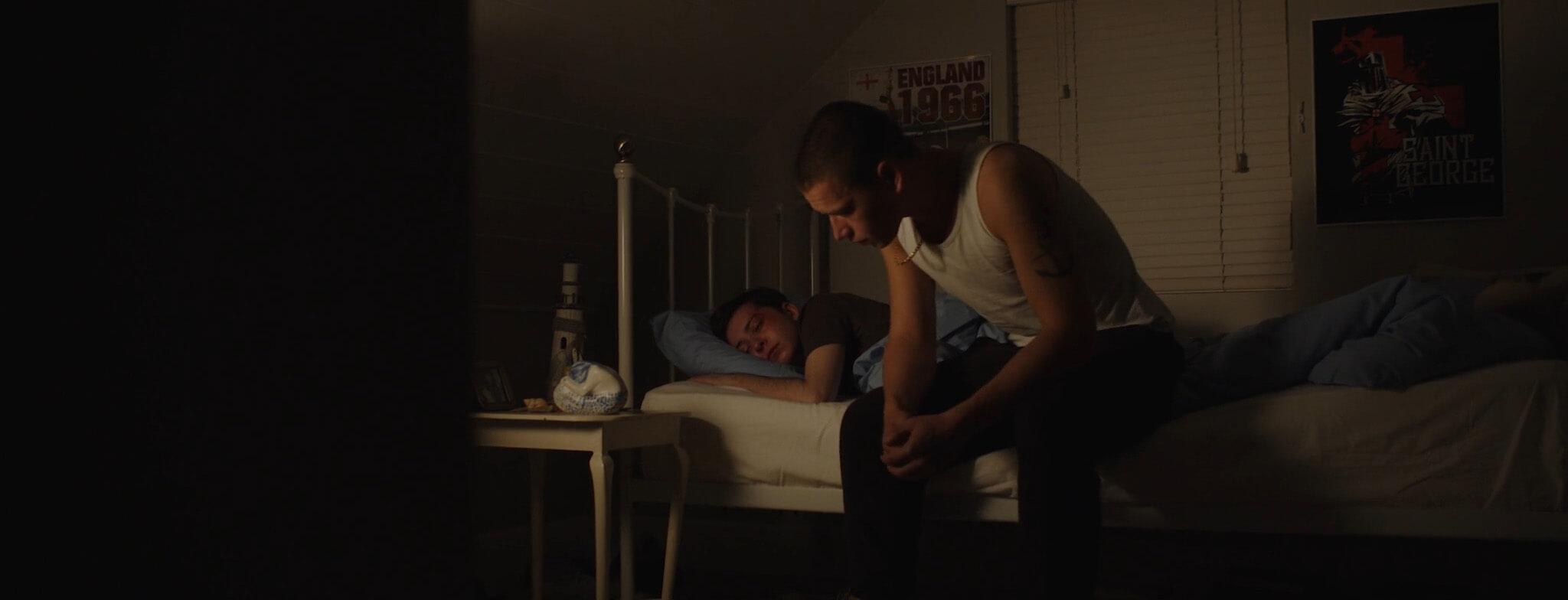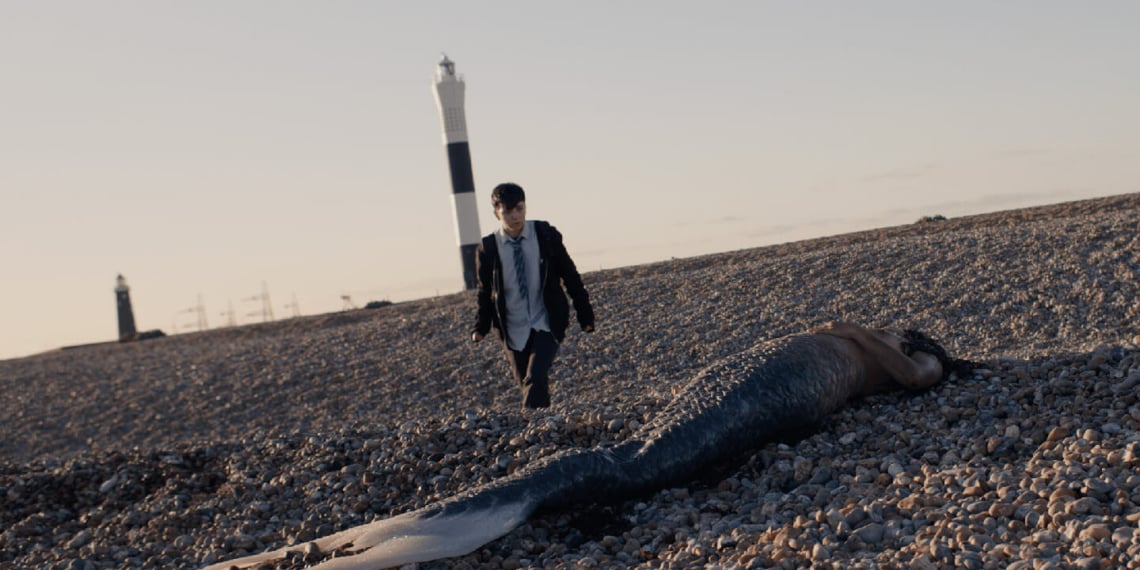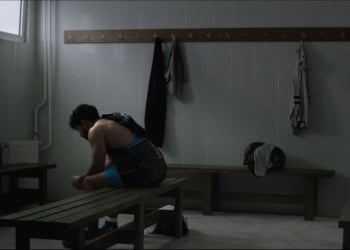Patrick Ireland’s Ill Fares the Land succeeds in creating the impression of something alive out of itself. And indeed it is alive, chiefly with guilt, fear, and unceasing friction between an impoverished island and the larger world. The protagonist is a young teenage boy, who has not spoken in nearly two years, overwhelmed by worlds outside and within.
The editing of the film brings the screenplay to life with brusque economy. England, seaside, steadily disintegrating every day. Violence is casual and everyday. A young boy, George (Noah Silverstone), faces a crucial moment of growth. What sort of a person has his choice made him?

Though the film positions an individual protagonist, a young one at that, it concerns itself with being much more than a coming-of-age story. If George does come of age, it is violently, in tandem with the world of which he is part. It is this world that the film examines closely in order to understand George. Two generations of men stand behind him. His violent, abusive father (Mark Keegan). And his far-right radicalised older brother (Trey, played by Ruaridh Aldington), who has been trained to transfer the pain of his impoverished, bleak life onto the boats of immigrants with bleaker lives. While the former is comfortable with his life, the latter struggles. George may even be the embodiment of Trey’s inner, necessarily suppressed, conflict. One restrained and the other expressive, Silverstone and Aldington both deliver devastating performances.
With this background, George is suddenly faced with a mermaid (Smilla Erlandson, with astonishing SFX design). Dishevelled, injured and stranded, she is as wordless as he will become. The events within this single scene are revealed over several flashbacks, the mermaid’s fluttering tail too real, too alive, almost too physical to bear. The notion of some terrible guilt is unmistakable.

It is as if guilt keeps the film from dwelling too long on an incident that George cannot let himself face. Simultaneously, the narrative is repeatedly intercut with and haunted by the image of someone drowning. Silently convulsing with the implications of his actions, the construction of George’s psyche gives the film its rich, live quality.
There is much to Ill Fares the Land that cannot be discussed within the scope of a single review, but this is perhaps the best film this writer has seen this year. The layers are many, and moving. Its characters, brilliantly carved out of one another. And though the mermaid is only briefly present, she is the film’s crown jewel for the significance of her role, the performance, and the prosthetics. This is a film that must be seen, and many times.
Watch Ill Fares The Land Short Film Trailer
Ill Fares the Land: Guilt, Fear and Conflict in a Story (Not) About a Mermaid
-
Direction
-
Cinematography
-
Screenplay
-
Editing
-
Music

















